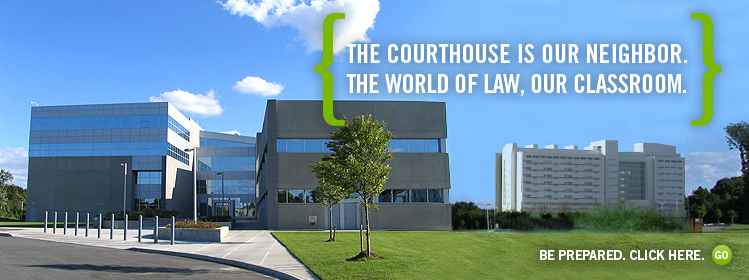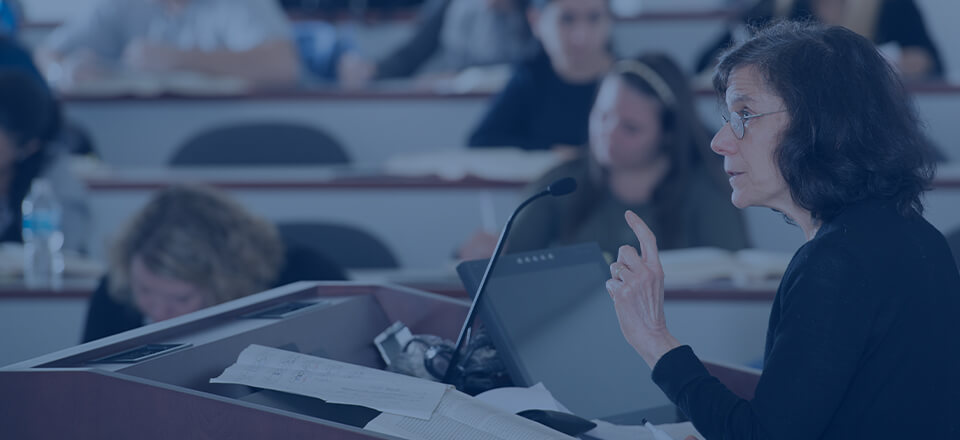About
Facilities

The Gould Library, named for its benefactor, Bruce K. Gould ’83, occupies 42,000 square feet of the building, contains 450,000 volumes and volume equivalents, offers 476 seats in a variety of settings (private carrels, group seating, small, medium and large study group rooms), with a staff of 24.
The building has 14 classrooms, ranging from large tiered lecture halls to medium and small, along with seminar rooms and mock trial rooms. There is a 450-seat Auditorium, a range of multi-purpose meeting and dining rooms, a full-service Barnes & Noble bookstore, a large café and dining area serving breakfast, lunch, dinner and snacks; a Concourse devoted to student organization offices and student activities; and a wing housing the Law Center’s clinics, in which upper level students working under the supervision of experienced attorney-professors provide a wide range of legal services to the community, including elder law, family law, civil rights, disaster relief, and mortgage foreclosure/bankruptcy.
The Law Center also houses the William Randolph Hearst Public Advocacy Center, home to the offices of a dozen private legal services and public advocacy groups, all of which provide opportunities for students to gain hands-on skills training while developing an understanding of the problems facing the local community. Groups include those working on juvenile justice reform, domestic violence prevention, employee rights, civil liberties protection, the rights of students with disabilities, immigrants’ rights, and fair housing laws.
Most relevant is the Law Center’s location as part of a federal and state court complex. The Alfonse M. D’Amato United States Courthouse, housing federal courts and agencies, and the John P. Cohalan State Court Complex, home to Suffolk County District and Family Courts and the New York State Supreme Court, are virtually adjacent to the law school building. This court-law school campus, the only one of its kind in the nation, offers unparalleled opportunities for observation, learning, internships, and part- and full-time employment. The synergies of the location have also led to the development of the Law Center’s unique Collaborative Court Program, which incrementally merges doctrinal education with the procedural and substantive work of the courts. Students begin their legal education with a 1L Court Observation Program, continue to 2L integrative courses representing the infusion of practical courthouse experience into the classroom and culminate with a 3L Court Specialization Program.

